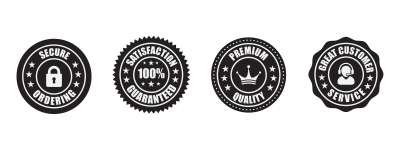Description
By using the Milking Machine Shell Cap properly, you can ensure efficient, hygienic, and high-quality milk extraction, while also prolonging the life of the milking machine and its components. Regular cleaning, maintenance, and timely replacement of the shell cap are key to maintaining optimal performance.
Key Features
- Durable Material: Constructed from high-quality materials like stainless steel, durable plastic, or rubber, ensuring longevity and resistance to wear.
- Secure Fit: Designed to provide a tight, secure fit over the milking shell, preventing air leaks and ensuring efficient suction.
- Hygienic Design: Smooth, easy-to-clean surfaces that prevent the buildup of milk residues and bacteria.
- Lightweight and Compact: Easy to handle, install, and remove, contributing to overall milking efficiency.
- Universal Compatibility: Available in various sizes and shapes to fit different types of milking shells and liners.
- Corrosion Resistant: Resistant to corrosion and damage from cleaning agents, ensuring long-term use.
- Easy Installation: Simple design allows for quick and hassle-free attachment to the milking shell.
Benefits
- Enhanced Milking Efficiency: Ensures a tight seal and proper positioning of teat cups, leading to more efficient milk extraction.
- Improved Milk Quality: Prevents air leaks and contamination, helping to maintain high milk quality.
- Durability: High-quality construction provides long-lasting performance, reducing the need for frequent replacements.
- Cost-Effective: Reduces downtime and maintenance costs by ensuring reliable operation of the milking machine.
- Hygienic Operation: Easy to clean and sanitize, promoting a more hygienic milking environment.
- Versatile Use: Compatible with various milking machines and setups, providing flexibility for different dairy operations.
- User-Friendly: Simple to install and remove, making it easier for dairy workers to maintain and operate the milking equipment.
How to Use
- Preparation:
- Ensure that the milking machine is turned off and disconnected from the power source before starting.
- Clean the shell cap, milking shell, and surrounding areas to remove any dirt, debris, or residual milk.
- Installation:
- Align the Shell Cap: Position the shell cap over the open end of the milking shell, ensuring that it aligns correctly with the teat cup liner.
- Secure the Cap: Press the shell cap firmly onto the milking shell until it snaps or locks into place. Ensure that it forms a tight seal with no gaps or air leaks.
- Operational Use:
- Start the Milking Process: With the shell cap securely in place, begin the milking process by turning on the milking machine and attaching the teat cups to the cow’s teats.
- Monitor Performance: During milking, observe the shell cap to ensure it remains securely attached and that there are no air leaks or other issues affecting suction.
- Maintenance:
- Regular Cleaning: After each use, remove the shell cap and clean it thoroughly with warm water and a mild detergent. Rinse and dry it before reattaching.
- Sanitization: Periodically sanitize the shell cap with an approved sanitizing solution to prevent the buildup of bacteria and maintain hygiene.
- Inspection: Regularly inspect the shell cap for signs of wear, damage, or cracking. Replace it if any defects are found to ensure continued efficient operation.
- Troubleshooting:
- Check for Leaks: If you notice any air leaks or reduced suction during milking, inspect the shell cap for proper fit and sealing. Reattach or replace as necessary.
- Replace Worn Caps: Over time, the shell cap may wear out or become damaged. Replace it with a new one from the same manufacturer to ensure compatibility and performance.
- Storage:
- Store the shell cap in a clean, dry area when not in use to protect it from dirt, dust, and potential damage.
Discover more from The Kisan
Subscribe to get the latest posts sent to your email.






















Reviews
There are no reviews yet.